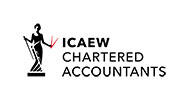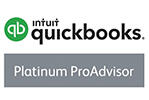Was a company buyback of EIS shares tax avoidance?
Two taxpayers used the “purchase of own shares” procedure to extract gains they’d made from enterprise investment scheme (EIS) shares. HMRC said this was unfair tax avoidance, the taxpayers disagreed. What did the Upper Tribunal decide?

Case facts
In early 2015, Hugh Osmond and Matthew Allen (O and A) held shares in Xercise2 Ltd. A and O became concerned that the enterprise investment scheme (EIS) capital gains tax relief they were entitled to could be withdrawn because the company ceased to meet the conditions for the EIS status. They therefore arranged for Xercise2 to purchase its own shares (known as a share buyback) from them. The buyback crystallised £20 million of gains for O and A which they claimed were tax free because of the EIS tax break. HMRC thought otherwise.
HMRC assessment
In 2021 HMRC issued assessments to O and A asserting that the share buybacks were caught by the transactions in securities (TiS) anti-avoidance rules which made the gains taxable as income. O and A appealed against the assessments. The First-tier Tribunal (FTT) agreed with HMRC that a “main reason” for the purchase of own shares had been to obtain an income tax advantage and this met the condition for the TiS rules to apply. The judges agreed. They said that the tax advantage became inevitable as soon as O and A arranged the share buyback. Therefore, it was also inevitable that the TiS rules had to apply. O and A appealed against the FTT’s decision to the Upper Tribunal (UT).
UT arguments
HMRC stuck to the same arguments that had been successful at the FTT. O and A countered, saying that the main reason for the buyback was to secure EIS tax relief which was a government-approved tax break. The relief would have been lost had they not arranged the share buyback. They argued the TiS rules required a subjective view of their motives for the buyback, not simply its outcome. If the latter were true many government-approved schemes would be caught by anti-avoidance rules making them ineffective.
The UT’s decision
The UT judges concluded that the TiS main reason condition must take account of a taxpayer’s subjective intentions and not just the effect of the transaction.
The judgment highlighted the difference between purpose and effect of a transaction. The judges said that just because a transaction has tax advantages it doesn’t mean that these are a main purpose for it. O and A’s main concern was that EIS relief might soon disappear and so their motive was to preserve it. The share buyback was the only practical way to do this. Thus the buyback by itself was not for tax avoidance, rather it was to ensure that legitimate tax relief was not lost. The UT therefore ruled in favour of O and A.
The UT’s judgment reinforces a key principle, i.e. when deciding why a taxpayer acted as they did account must be taken of their actual intentions and not just the outcome of their actions. In many cases HMRC seems unable to grasp the difference. Don’t be afraid to use the judgment in this case to counter any HMRC attempt to impose anti-avoidance rules just because the outcome of a transaction resulted in a tax saving. As in this case, the motive and not the outcome is the key factor.
Related Topics
-
HMRC checks directors’ loans are paid up
HMRC is writing to agents to check corporation tax returns for previous years are correct as it used to be possible to add a future date for an anticipated loan repayment. What’s the issue and what should you do if your advisor receives a letter?
-
Working from home tax relief scrapped in Budget
Employees who are required to work from home are currently able to claim tax relief at a flat rate of £6 per week. That's changing from 6 April 2026. What's the full story?
-
Government quietly confirms change to key tax deduction
The headlines for individuals at last week's Budget were all about the income tax hikes. But the small print contained confirmation of another important change. What’s the full story?



 This website uses both its own and third-party cookies to analyze our services and navigation on our website in order to improve its contents (analytical purposes: measure visits and sources of web traffic). The legal basis is the consent of the user, except in the case of basic cookies, which are essential to navigate this website.
This website uses both its own and third-party cookies to analyze our services and navigation on our website in order to improve its contents (analytical purposes: measure visits and sources of web traffic). The legal basis is the consent of the user, except in the case of basic cookies, which are essential to navigate this website.